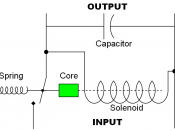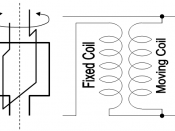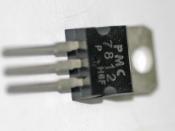Diagnostic Test - Alternator Output Test (12V)
Concept
The alternator is the heart of the charging system. It is an alternating-current generator mounted on the engine, which is driven by a belt from the crankshaft. The alternator develops alternating current, which is changed to direct current. Alternating current changes from positive (+) to negative (-) at a regular cycle. Direct current does not change from positive (+) to negative (-). Only direct current can be used to charge a battery. As the battery drain continues, and engine speed increases, the charging system is able to produce more voltage than the battery can deliver. When this occurs, the electrons from the charging device are able to flow in a reverse direction through the battery's positive terminal. The charging device is now supplying the electrical system's load requirements; the reserve electrons build up and recharge the battery.
Diagnosis
1. With a multimeter/ voltmeter measure the battery voltage at the battery terminals with the engine turned off.
Remember that positive (red) terminal on battery always connects to positive on the multimeter
2. Now start the engine and run it as fast idle (approximately 1500rpm), and do the same test as above (but with engine still running at fast idle), measuring the voltage at the battery with a multimeter/voltmeter.
Evaluation
Reading for the first test should be approximately 12V (or slightly higher)
Assuming that the first test is ok and the battery is putting out the correct voltage, then the output with the engine running should be greater than 13.9V and less than 15.1V.
Adjustment and Repair
If voltage is less than 13.9V
÷ Check/test battery (may require replacement)
÷ Check/test alternator (may need service and require new brushes, or replacement of whole unit)
÷ Check fan belt tension for looseness and slippage on...


